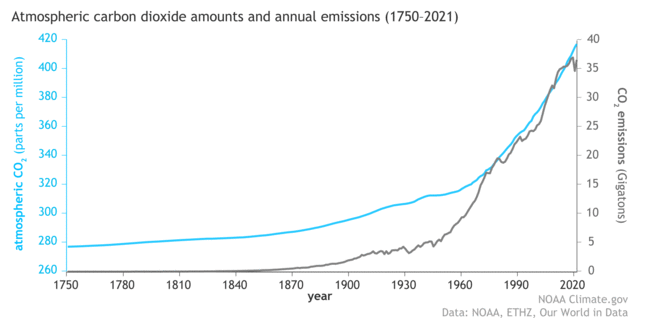Climate Change – The Hot Topic
Gabrielle Walker and Sir David King
After some years of uncertainty climate scientists can now explain the effects that man made emissions of carbon dioxide are having on climate change. This is a big subject which has been much in need of a book to clarify the science and summarise the findings. The Hot Topic does that and also outlines what the world can do to curb the very serious implications of allowing global warming to continue unchecked.
We strongly recommend The Hot Topic by Gabrielle Walker and Sir David King. For those short of time this page aims to summarises key points.
Is the world really warming?
Yes. Ten of the past eleven years have been the warmest since records have been kept (over the past 150 years). Following reconstructions of earlier temperatures from ice cores, tree rings, and other techniques, it is clear that we are feeling the highest temperatures for over 1,000 years.
What other factors are influencing temperatures?
There are many factors influencing temperatures including natural cycles, changes in the sun, and the slight wobbles in the orbit of the Earth around the Sun which trigger the ice ages.
Where does Earth get its heat from - where does it lose heat?
The Earth gains heat from the Sun each day, and radiates it away into space each night. Some of the energy of the Sun is reflected away by the atmosphere and white clouds before it reaches the Earth. Some of the energy is trapped within the Earth's atmosphere by its blanket of greenhouse gases (including carbon dioxide, methane, water vapour).
What is the carbon dioxide concentration in the atmosphere?
During the ice ages CO2 was down at 180 ppm (parts per million). For the last 20,000 years up to the year 1900 the CO2 level was within 260 to 290 ppm. Over the last 40 years it has risen to 420 ppm, and continues to rise at the rate of 2 ppm per year.
In May 2013 the amount of CO2 in the atmosphere was measured at 400 ppm at a key observation station in Hawaii for the first time since measurements began in 1958.
The global average atmospheric carbon dioxide in 2017 was 405.0 ppm. Carbon dioxide levels in 2022 are higher than at any point in the past 800,000 years.
Where has this additional CO2 come from?
From human beings burning coal, oil and gas and releasing large quantities of CO2 that were laid down over in the carboniferous era (from 360 million years ago to 290 million years ago). Fossil fuels are being burnt in ever increasing quantities in generating electricity, for transport and for heating and cooling buildings.
What is the alternative to burning fossil fuels to heat and cool buildings?
For heating and cooling buildings there is now a practical alternative called Interseasonal Heat Transfer.
Does the current rate of climate change matter?
Yes. Biological species have been shown to adapt and evolve to changing conditions over very long periods of time. The current increases in temperatures are more rapid than evolutionary cycles can adapt to easily.
Many of the world’s major cities have been built at sea level. If sea levels rise with the melting of polar ice caps then cities like London, New York and Tokyo, and counties like the Maldives, will be underwater.
What is the UK government doing to combat climate change?
The government has introduced the Renewable Heat Incentive to encourage owners of buildings to invest in renewable energy technology.
What can you do to reduce your carbon emissions?
You can reduce your spending on burning fossil fuels and invest in alternative forms of heating such as using solar thermal panels to generate heat for hot water and ground source heat pumps for transferring heat from the ground into your building.
See also: Sustainable Energy
Green Heat | Green Cooling | Green Energy Options
See also: Banking on IHT | Evergreen Engine
See also: Renewable Heat Incentive

